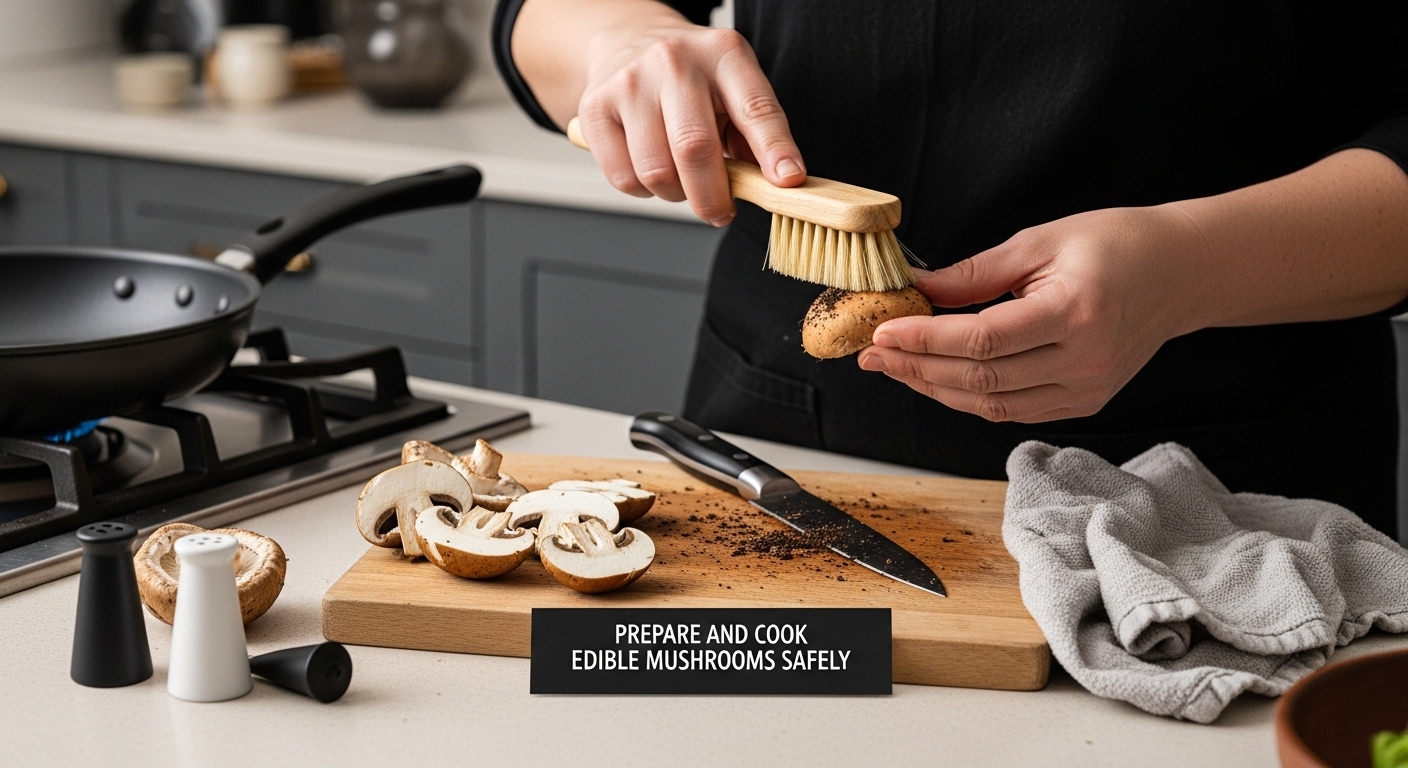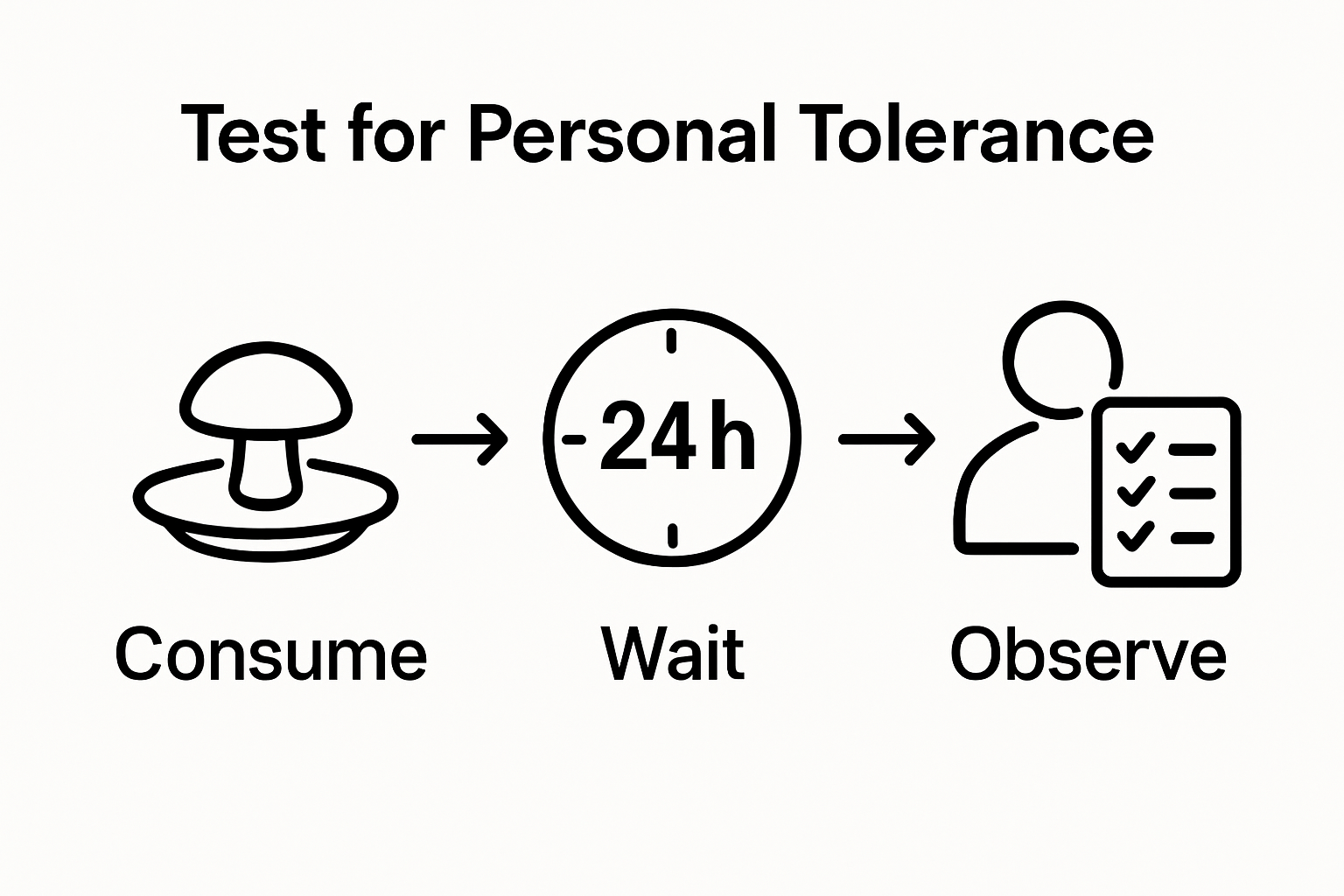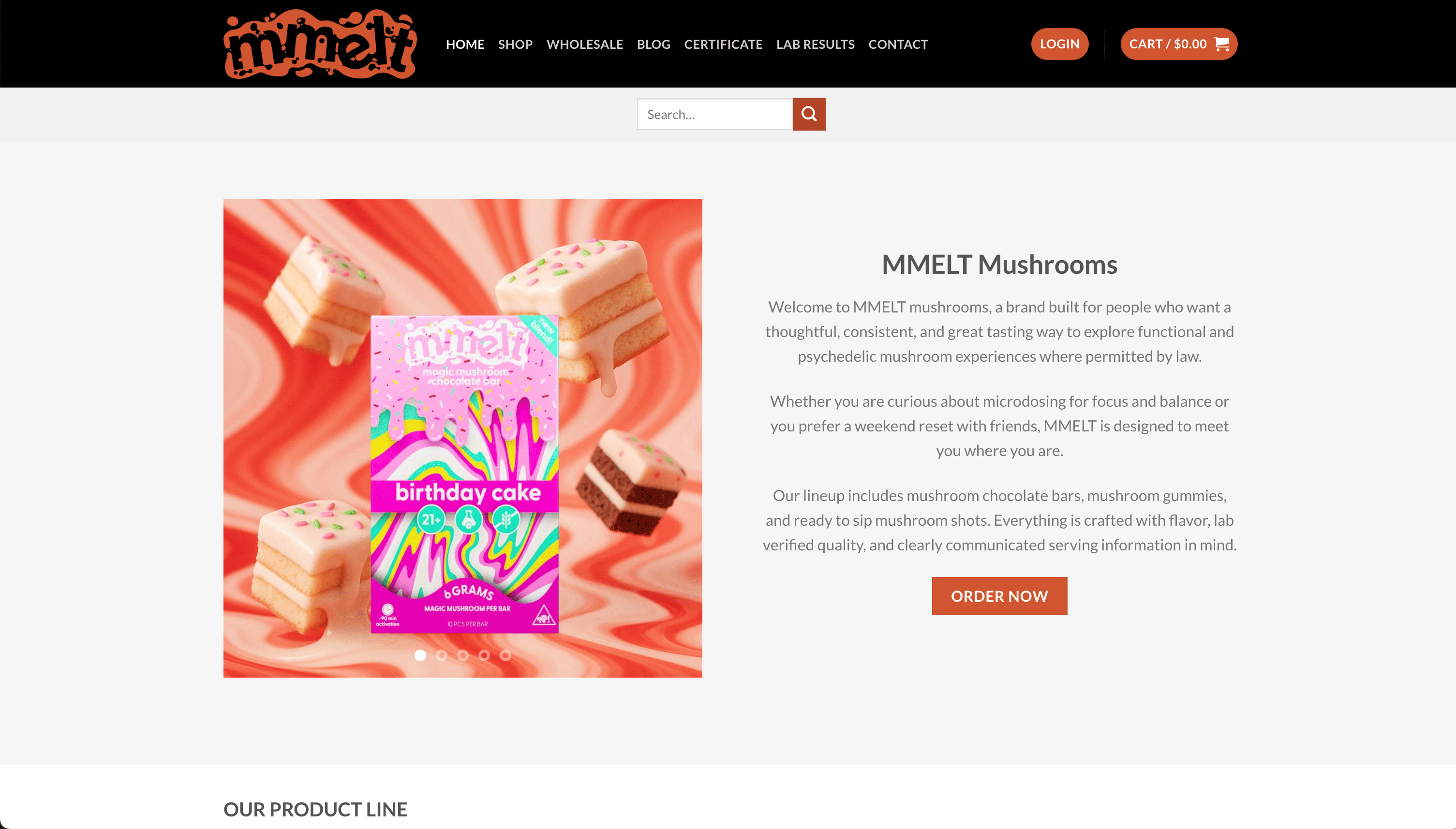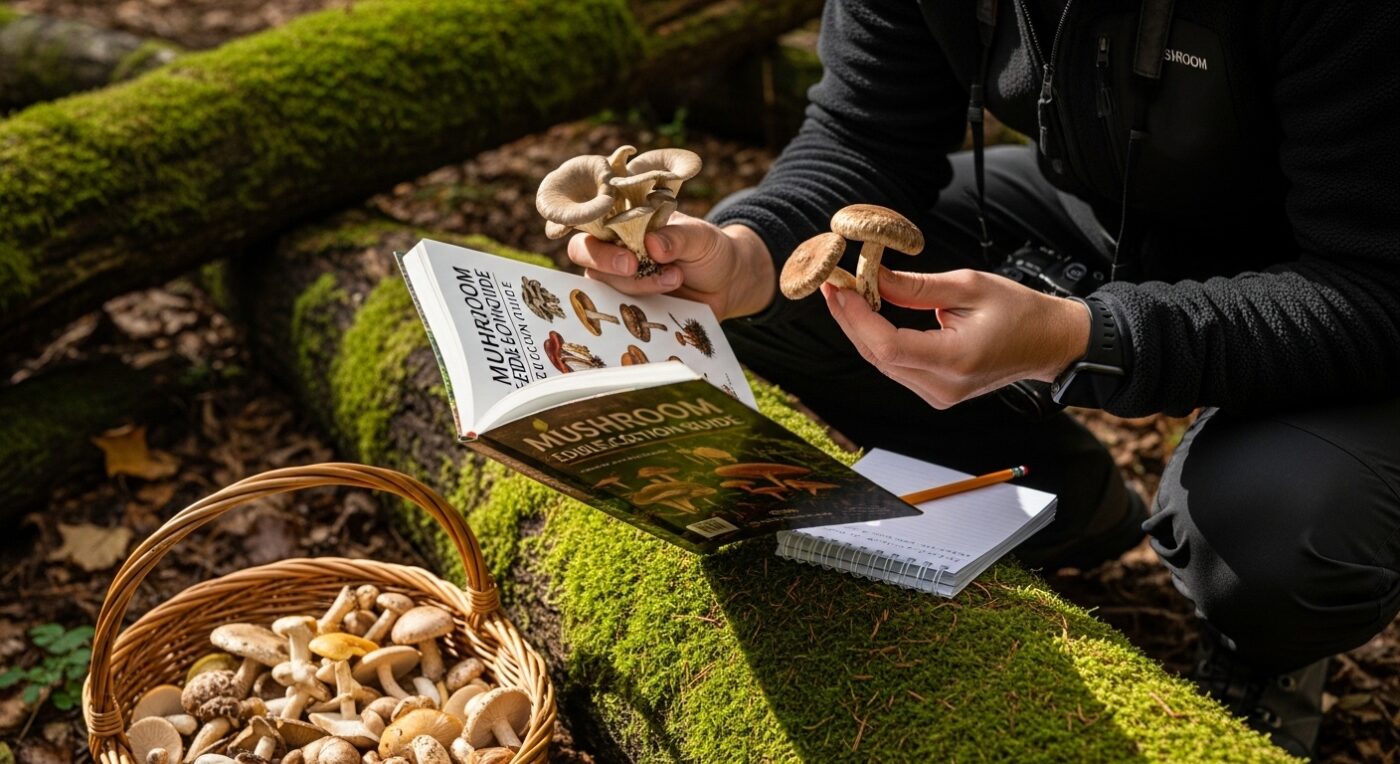Blog
Mushroom Edible Education Guide: Safely Identify Edibles
Figuring out which wild mushrooms are safe to eat is no casual hobby and the risks can surprise even the most confident nature lover. A single misidentified mushroom can lead to serious health problems or worse, yet up to 90 percent of wild fungal species are completely harmless if you know what to look for. Most people think mushroom foraging is just about finding tasty treats in the woods, but the truth is the key to safe foraging starts long before you ever step outside. Knowledge and careful preparation make all the difference.
Table of Contents
- Step 1: Research Common Edible Mushrooms
- Step 2: Collect Necessary Tools For Identification
- Step 3: Identify Mushrooms In Their Natural Habitat
- Step 4: Assess Edibility Through Key Characteristics
- Step 5: Prepare And Cook Edible Mushrooms Safely
- Step 6: Test For Personal Tolerance And Effects
Quick Summary
| Key Point | Explanation |
|---|---|
| 1. Research edible mushrooms thoroughly | Understanding mushroom species is vital for safe consumption and prevents potential health risks. Focus on recognizable varieties like oyster or shiitake. |
| 2. Equip essential identification tools | Use high-quality guides, cameras, and notebooks to enhance identification accuracy and documentation during foraging. |
| 3. Observe mushrooms in their habitat | Analyze the ecosystem and physical traits of mushrooms, documenting details for accurate identification and verification. |
| 4. Assess mushrooms for safety and edibility | Examine multiple physical indicators of mushrooms, including color, structure, and spore print, to determine safety before consumption. |
| 5. Test personal tolerance before consuming | Introduce new mushrooms cautiously by consuming a small amount and monitoring your body’s response for 24 hours to identify any adverse effects. |
Step 1: Research Common Edible Mushrooms
Understanding which mushrooms are safe to consume is the critical first step in your edible mushroom journey. Proper research prevents potential health risks and ensures a safe, enjoyable experience. Your initial focus should be on identifying mushroom species that are universally recognized as edible and learning their distinct characteristics.
Begin by familiarizing yourself with the most common and easily identifiable edible mushrooms. Species like oyster mushrooms, shiitake, chanterelles, and morel mushrooms are excellent starting points for novice foragers and culinary enthusiasts. According to research from Montana State University, comprehensive identification involves studying multiple visual and structural characteristics that distinguish safe mushrooms from potentially toxic varieties.
Your research should encompass multiple learning resources. Invest in reputable field guides specifically focused on mushroom identification, which typically include detailed photographs, scientific descriptions, and habitat information. Consider connecting with local mycological societies or mushroom foraging groups that offer workshops, guided tours, and expert guidance. These communities can provide invaluable hands on learning experiences and help you develop a nuanced understanding of mushroom identification techniques.
Key aspects to document during your research include mushroom cap shape, gill structure, stem characteristics, spore color, and typical growing environments. Create a personal reference notebook or digital archive where you can compile information about different edible mushroom species. This documentation will serve as a valuable tool when you begin actual identification and foraging processes.
Remember that visual identification alone is never sufficient. Always cross reference multiple sources and be prepared to seek expert confirmation before consuming any wild mushrooms. The goal of this research phase is to build a solid foundation of knowledge that will protect you from potential misidentification and associated health risks.
Step 2: Collect Necessary Tools for Identification
Equipping yourself with the right tools is crucial for accurate mushroom identification and ensuring your safety during foraging adventures. Proper preparation prevents potential misidentification and health risks. The tools you select will become your primary defense against consuming potentially toxic mushrooms.
According to the Mycological Society of San Francisco, your identification toolkit should include several essential items that will support comprehensive mushroom research and collection. Start by investing in high quality field guides with detailed color photographs and scientific illustrations. These references will help you compare physical characteristics and understand subtle differences between edible and poisonous species.
Photographic documentation is another critical component of your toolkit. A reliable digital camera or smartphone with high resolution capabilities allows you to capture detailed images of mushrooms in their natural habitat. Photograph multiple angles including the cap, stem, gills, and surrounding environment to facilitate accurate later identification. Consider purchasing a small portable tripod to minimize blur and capture precise details.
Additional tools that serious mushroom enthusiasts recommend include a sturdy knife with a curved blade for careful harvesting, a mesh collecting bag that allows spores to spread during transport, and a small notebook for recording environmental observations. Protective gear like gloves and waterproof hiking boots will also enhance your foraging experience and safety.
Equipment for measurement can further support precise identification. A small ruler or collapsible measuring tape helps you document exact sizes of mushroom components, which can be crucial in distinguishing between similar looking species. Magnifying glasses or field microscopes provide enhanced visual examination of intricate mushroom structures that might not be visible to the naked eye.
Before heading into the field, organize your tools systematically in a waterproof backpack or specialized foraging kit. Familiarize yourself with each item’s purpose and practice using them in controlled environments.
The following table summarizes essential tools for mushroom identification, organizing purposes and brief descriptions to help you prepare an effective foraging and documentation kit.
| Tool | Purpose | Description |
|---|---|---|
| Field Guide | Detailed species reference | Book with color photos, scientific descriptions, and habitats |
| Digital Camera | Documentation and later verification | Captures high-resolution images from multiple angles |
| Curved Knife | Safe harvesting | Used to carefully cut and collect mushrooms in the field |
| Mesh Collecting Bag | Transport and spore distribution | Allows airflow and disperses spores while carrying mushrooms |
| Ruler/Measuring Tape | Size measurement | Documents exact dimensions of cap, stem, and other components |
| Magnifying Glass | Close-up examination | Enhances view of fine structural features |
| Notebook | Note-taking and illustration | Records field observations, sketches, and environmental details |
| Gloves | Protection from unknown toxins | Keeps hands safe during handling and prevents cross-contamination |
| Remember that no single tool guarantees perfect identification, so always approach mushroom collection with caution and a commitment to continuous learning. |
Step 3: Identify Mushrooms in Their Natural Habitat
Identifying mushrooms in their natural environment requires a systematic and observant approach that goes beyond simple visual recognition. Successful identification demands careful examination of multiple environmental and physical characteristics. This step transforms you from a casual observer to a methodical mushroom investigator.
According to Utah State University, understanding the precise habitat and substrate where mushrooms grow is fundamental to accurate identification. Begin by carefully documenting the surrounding ecosystem. Note whether the mushrooms are growing in coniferous forests, deciduous woodlands, grasslands, or near specific types of trees. Pay close attention to the substrate supporting the mushrooms, such as decaying logs, soil, moss, or living tree bark.
Observe the mushroom’s physical characteristics with scientific precision. Examine the cap shape, color, texture, and any distinctive markings. Look for unique features like ridges, scales, or color variations that might change when the mushroom is touched or bruised. Note the stem’s structure, including its thickness, color, and any rings or distinctive patterns. Take detailed photographs from multiple angles, ensuring you capture the entire mushroom, including its base and surrounding environment.
Careful sensory exploration becomes your primary identification tool. Gently touch the mushroom to assess its texture, noting whether it feels smooth, sticky, dry, or brittle. Some mushrooms change color when touched or bruised, which can be a critical identification marker. However, always use caution and avoid direct skin contact with unknown mushrooms. Wear gloves and use tools to minimize direct handling.
Creating a comprehensive field record is crucial. Sketch the mushroom, record its measurements, and document environmental conditions like temperature, humidity, and nearby plant species. Your detailed observations will serve as a critical reference for later identification and verification. Remember that no single characteristic definitively identifies a mushroom. Cross reference your findings with multiple field guides and expert resources, always maintaining a cautious and methodical approach to ensure your safety.
Step 4: Assess Edibility Through Key Characteristics
Assessing the edibility of mushrooms requires a meticulous and scientific approach that goes far beyond casual observation. Determining whether a mushroom is safe to consume involves analyzing multiple complex characteristics that require extensive knowledge and careful examination. This critical step stands between you and potential health risks.
According to Montana State University, there are no universal shortcuts to confirming mushroom edibility. Professional mycologists recommend examining several key physical indicators that can help distinguish safe from toxic species. Begin by carefully analyzing the mushroom’s color consistency, paying special attention to any unusual color changes when the specimen is cut or bruised.
Structural characteristics provide crucial insights into a mushroom’s potential edibility. Examine the cap, stem, and gill structures with precision, looking for distinctive features that match known edible species. Note the texture of different mushroom components, observing whether surfaces are smooth, rough, sticky, or have unique patterns. Color variations, especially those that occur when the mushroom is handled or exposed to air, can be significant warning signs.
Spore color and print analysis represent another sophisticated technique for assessing edibility. Create a spore print by placing the mushroom cap gill side down on white and dark paper, allowing spores to drop and reveal their true color. Different mushroom species produce spores in distinctive colors ranging from white and cream to dark brown and black. These prints can help narrow down potential identification and provide critical information about the mushroom’s characteristics.
Cross referencing your observations with multiple expert resources becomes paramount. Never rely on a single identification method or guide. Consult comprehensive field guides, engage with local mycological societies, and consider seeking expert verification before considering any wild mushroom for consumption. Remember that even experienced foragers can make potentially dangerous misidentifications. Your safety depends on a methodical, cautious approach that prioritizes thorough investigation over hasty assumptions.
Step 5: Prepare and Cook Edible Mushrooms Safely
Preparing and cooking edible mushrooms requires a systematic approach that prioritizes food safety and culinary enjoyment. Proper preparation transforms your carefully identified wild mushrooms into delicious and safe culinary experiences. This step bridges your foraging efforts with gastronomic satisfaction while eliminating potential health risks.
According to the Puget Sound Mycological Society, thorough cooking is essential for destroying potential toxins and improving mushroom digestibility. Begin by meticulously cleaning your harvested mushrooms using a soft brush or damp cloth to remove dirt, debris, and potential insects. Avoid soaking mushrooms in water, as this can compromise their texture and flavor. Instead, gently wipe each mushroom, paying close attention to crevices and gill areas where contaminants might hide.
Inspect each mushroom carefully before cooking. Cut the mushrooms in half to check for hidden insects or unusual discoloration, discarding any specimens that appear compromised. Trim away tough stems or damaged sections, ensuring only the highest quality portions make it to your cooking pan. Choose cooking methods that thoroughly heat the mushrooms, such as sauteing, roasting, or grilling, which help break down potential toxins and enhance their natural flavors.
Temperature plays a crucial role in mushroom preparation safety. Use a reliable cooking thermometer to ensure your mushrooms reach an internal temperature that eliminates potential harmful microorganisms. Different mushroom species may require slightly varied cooking techniques, so research the specific variety you’ve collected. Some delicate mushrooms like chanterelles might require gentler cooking methods, while heartier varieties like shiitake can withstand more robust preparation techniques.
Consider your cooking equipment carefully. Use clean, well maintained cookware and utensils to prevent cross contamination. A cast iron skillet or heavy bottom pan works excellently for most mushroom cooking methods. Season your mushrooms with complementary herbs and spices, but avoid overwhelming their natural flavors. Remember that your first priority is safety, followed closely by creating a delicious culinary experience. When in doubt about any aspect of preparation, consult local mycological experts or experienced foragers who can provide specific guidance for your mushroom variety.

Step 6: Test for Personal Tolerance and Effects
Testing your personal tolerance to newly identified edible mushrooms represents a critical safety step that bridges careful identification with actual consumption. Individual reactions to mushrooms can vary dramatically, making personal tolerance assessment an essential precautionary measure. This step requires patience, careful observation, and a methodical approach to understanding how your body responds to specific mushroom varieties.
According to the Puget Sound Mycological Society, the recommended protocol involves consuming a very small quantity of the prepared mushroom and carefully monitoring your body’s response over a 24-hour period. Begin by preparing a minimal portion of the mushroom using your standard cooking method, ensuring it is thoroughly cooked and properly cleaned. Choose a time when you are in good health, well rested, and have no other significant dietary changes or stressors that might complicate your assessment.
Create a detailed tracking system to document your response. Prepare a personal reaction log that records time of consumption, quantity eaten, preparation method, and any physical or physiological changes. Monitor yourself for potential symptoms such as digestive discomfort, allergic reactions, headaches, or unexpected bodily responses. Pay close attention to subtle changes in energy levels, mood, and overall well being. Some individuals might experience mild digestive adjustments or subtle metabolic responses that require careful documentation.
Consider consuming the mushroom in isolation from other complex foods to ensure accurate assessment of your personal tolerance. Avoid mixing multiple new mushroom varieties in a single meal, as this can complicate your ability to identify specific reactions. Hydration plays a crucial role during this testing phase, so maintain adequate water intake and be prepared to seek medical attention if you experience any severe or persistent symptoms. Remember that even professionally identified edible mushrooms can trigger individual allergic responses or intolerances. Your personal safety and careful observation are the most important aspects of this critical step in mushroom consumption.

Take the Uncertainty Out of Mushroom Edibles
Learning to safely identify wild mushrooms can be overwhelming. The article highlights the risks of misidentification, the need for precise tools, and the constant vigilance required to prevent health problems. For many readers, these steps can feel stressful and complicated, especially when your ultimate goal is to enjoy the benefits of mushrooms with complete confidence. If you value transparency, safety, and convenience, you do not have to navigate this journey alone.
Experience true peace of mind with MMELT Mushrooms. Every product on our platform is made with lab-verified mushroom extracts, fully traceable and tested by third parties. You get clear labeling, detailed dosages, and reliable information in every edible, whether you choose chocolates, gummies, or shots.

Ready to skip the guesswork and enjoy mushroom-infused edibles designed for both newcomers and enthusiasts? Visit MMELT Mushrooms now and discover a safe, delicious way to experience all the benefits your research prepared you for. Take your next step toward responsible consumption today.
Frequently Asked Questions
How can I safely identify edible mushrooms?
Research is key. Start by familiarizing yourself with common edible species, using reputable field guides. Attend workshops or join local foraging groups for hands-on experience.
What tools do I need for mushroom identification?
Essential tools include high-quality field guides, a camera for documentation, a sturdy knife for harvesting, a mesh bag for collection, and measurement tools like a ruler or magnifying glass for detailed examination.
What characteristics should I look for when assessing mushroom edibility?
Examine the mushroom’s color consistency, structural features such as cap and gill shapes, and spore color. Cross-reference your findings with multiple expert resources to confirm identification.
How should I prepare and cook wild mushrooms to ensure safety?
Clean mushrooms gently, inspect them for damage, and ensure thorough cooking at the right temperatures. Use well-maintained cookware and avoid soaking mushrooms to preserve their texture and flavor.
Recommended
- Mastering Mushroom Edible Consumption Steps for Health Benefits – MMELT
- How to Select Mushroom Edibles for Health and Enjoyment – MMELT
- 7 Essential Tips for Your Mushroom Wellness List – MMELT

